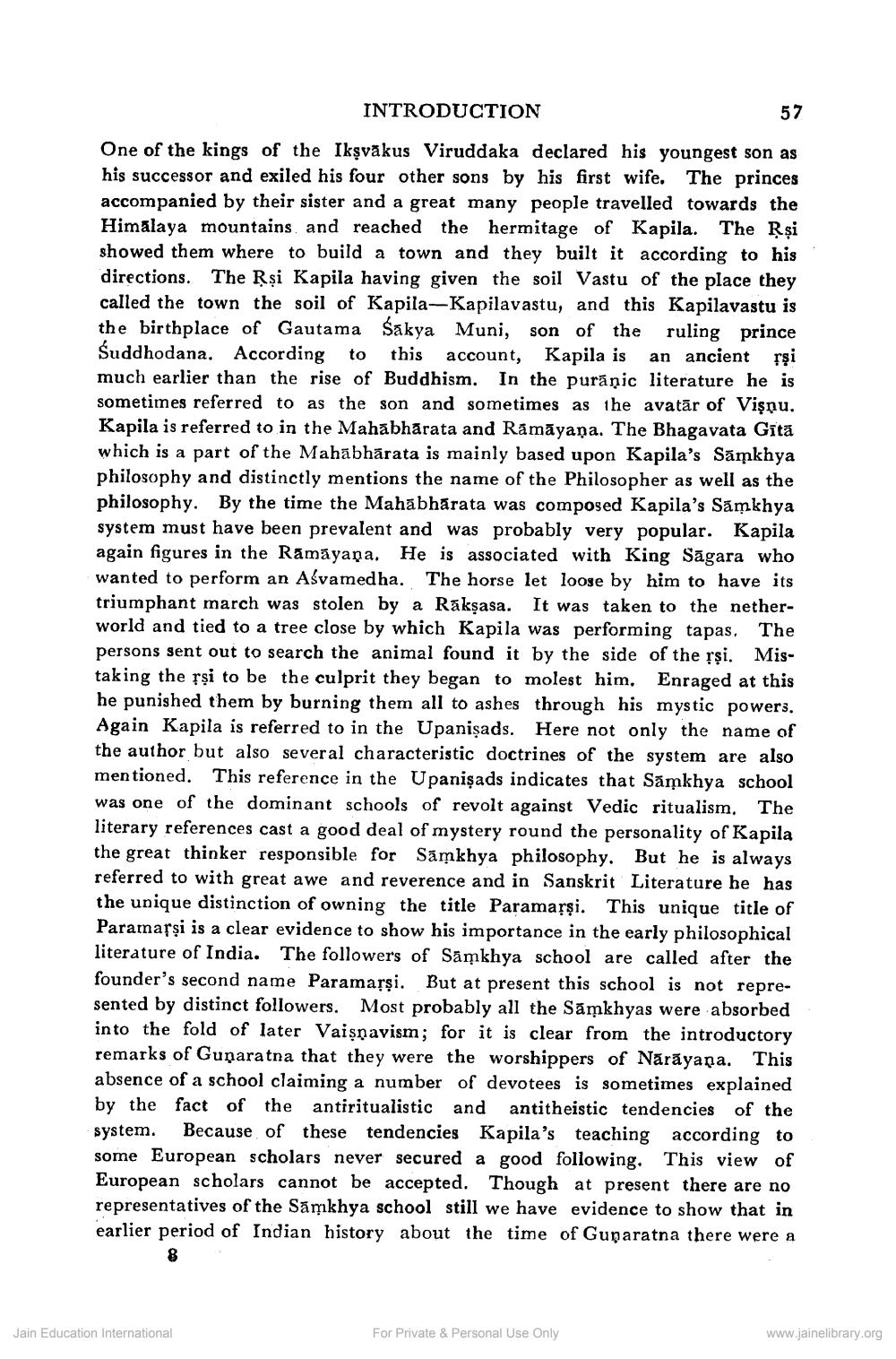________________
INTRODUCTION
57
One of the kings of the Ikşvākus Viruddaka declared his youngest son as his successor and exiled his four other sons by his first wife. The princes accompanied by their sister and a great many people travelled towards the Himalaya mountains, and reached the hermitage of Kapila. The Rși showed them where to build a town and they built it according to his directions. The Rși Kapila having given the soil Vastu of the place they called the town the soil of Kapila—Kapilavastu, and this Kapilavastu is the birthplace of Gautama Sakya Muni, son of the ruling prince Suddhodana. According to this account, Kapila is an ancient rşi much earlier than the rise of Buddhism. In the purāņic literature he is sometimes referred to as the son and sometimes as the avatār of Vişņu. Kapila is referred to in the Mahabharata and Rāmāyaṇa. The Bhagavata Gītā which is a part of the Mahabhārata is mainly based upon Kapila's Sāmkhya philosophy and distinctly mentions the name of the Philosopher as well as the philosophy. By the time the Mahabharata was composed Kapila's Sāmkhya system must have been prevalent and was probably very popular. Kapila again figures in the Rāmāyaṇa. He is associated with King Sāgara who wanted to perform an Aśvamedha. The horse let looge by him to have its triumphant march was stolen by a Rákşasa. It was taken to the netherworld and tied to a tree close by which Kapila was performing tapas. The persons sent out to search the animal found it by the side of the rși. Mistaking the rşi to be the culprit they began to molest him. Enraged at this he punished them by burning them all to ashes through his mystic powers. Again Kapila is referred to in the Upanişads. Here not only the name of the author but also several characteristic doctrines of the system are also mentioned. This reference in the Upanişads indicates that Sámkhya school was one of the dominant schools of revolt against Vedic ritualism. The literary references cast a good deal of mystery round the personality of Kapila the great thinker responsible for Sāņkhya philosophy. But he is always referred to with great awe and reverence and in Sanskrit Literature he has the unique distinction of owning the title Paramarşi. This unique title of Paramasși is a clear evidence to show his importance in the early philosophical literature of India. The followers of Sāmkhya school are called after the founder's second name Paramarși. But at present this school is not represented by distinct followers. Most probably all the Samkhyas were absorbed into the fold of later Vaisnavism; for it is clear from the introductory remarks of Gunaratna that they were the worshippers of Nārāyana. This absence of a school claiming a number of devotees is sometimes explained by the fact of the antiritualistic and antitheistic tendencies of the system. Because of these tendencies Kapila's teaching according to some European scholars never secured a good following. This view of European scholars cannot be accepted. Though at present there are no representatives of the Sámkhya school still we have evidence to show that in earlier period of Indian history about the time of Gunaratna there were a
Jain Education International
For Private & Personal Use Only
www.jainelibrary.org




